by Ashutosh Jogalekar
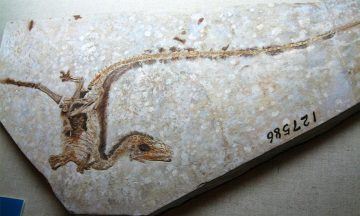
Neil Shubin’s “Some Assembly Required” is a delightful book whose thesis can be summarized in one word – “repurposing”. As Steve Jobs once put it, “Good artists create. Great artists steal”. By that reckoning Nature is undoubtedly the most magnificent thief and the greatest artist of all time. Repurposing in the history of life will undoubtedly become one of the great paradigms of science, and its discovery has not only provided immense insights into evolutionary biology but also promises to make key contributions to our understanding and treatment of human disease.
Among many other achievements of Darwin’s great theory was the explanation and prediction that similar parts of organisms had similar functions even if they might have looked different. One of the truly remarkable features of “On the Origin of Species” is how Darwin gets almost everything right, how even throwaway lines attest to a level of understanding of life that was solidified only decades after this death. The idea of repurposing came about in the “Origin” partly as a reply to objections raised by a man named St. George Jackson Mivart. Mivart was in the curious position of being a man of the cloth who had first wholeheartedly embraced Darwin’s theory and studied with Thomas Henry Huxley, Darwin’s most ardent champion, before then rejecting it and mounting an attack on it, timidly at first and then vociferously. Mivart’s own tract on the subject, “On the Genesis of Species” made his not-so-subtle dig at Darwin’s book clear.
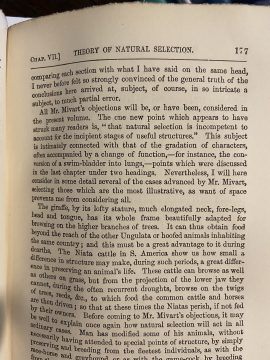
Mivart’s basic objection was similar to that raised then and later by creationists. Darwin’s theory crucially relied on transitional forms that enabled major leaps in life’s history; from fish to amphibian for instance or from arboreal life to terrestrial life. But in Mivart’s view, any such major transition would involve not just a sudden change in one crucial body part, say from gills to lungs, but a change in multiple body parts. Clearly the transition from water to land for instance involved hundreds if not thousands of changes in organs and structures for locomotion, feeding and breathing. But how could all these changes arise out of thin air? How could gills for instance suddenly turn into lungs in the first lucky fish that crawled out of water and learnt how to survive on land? This problem according to Mivart was insurmountable and a fatal flaw in Darwin’s theory. Darwin took Mivart’s objections seriously enough to include a substantial section addressing them in the sixth and definitive edition of his book, first published in 1872. In it he acknowledged Mivart’s problems with his theory, and then did away with them succinctly: There is no problem imagining organs being used in different species, Darwin said, as long as they are “accompanied by a change in function.” In writing this Darwin was even further ahead of his time than he imagined.
The silent steps of the discovery of evolutionary repurposing had in fact already been heard, even before Mivart and Darwin. The late 18th and early 19th centuries were a bonanza of discovery for anatomists and natural philosophers like Cuvier, Lamarck and Buffon. During Napoleon’s 1798 expedition to Egypt, the noted anatomist Etienne Geoffrey St Hilary discovered an amazing transitional form – the fossil of a fish that seemed to show characteristics of lungs and had holes for breathing on top of its skull. This fish became a celebrity and was exhibited in Paris to great fanfare. Many discoveries later confirmed that fish already have primitive forms of lungs whose original purpose was to provide buoyancy; when they took to the land, these air sacs were repurposed for breathing. Even today one sees an eerie trace of the momentous transition from water to land while watching videos of lungfish flapping jerkily from one body of water to another. One of the main objections to the theory of evolution, how organs could suddenly change during major evolutionary transitions, was thus put to rest by observing that the same organ existed in a different form even before, just performing a different function.
Another well known example of organ repurposing is the use of feathers marking the great transition from land to the air. One can only imagine the thrill that scientists felt – one of them wept because this was a vindication of a thirty-year-old theory he had – when they found an intact fossil of a dinosaur in China with a clearly visible downy covering on its exterior. Until then there had only been suggestive hints of feather-like structures found in poorly formed fossils; some of these hints were indirect and came from observations not of feathers directly but of limbs whose bone structures seemed to resemble those of birds. When fossils with intact featherlike patterns were found, it became very plausible that feathers in reptiles were used not for flying but for other purposes such as thermal insulation and mate seeking; clearly when birds appeared, these existing implements could be used to take to the air.
But even Darwin did not know how spectacularly deep the similarities between organs and body parts would go once DNA and the genetic code was discovered, exactly how tangled his “tangled bank” of life would be. Shubin describes a host of well known as well as more obscure intrepid biologists including Thomas Hunt Morgan, Linus Pauling, Emile Zuckerkandl, Bashford Dean, Nipam Patel, Barbara McClintock, Mary-Claire King, Lynn Margulis, Vinny Lynch and David Wake who have devoted their lives to exploring the origin and development of body plans, cells, and genes. A common thread among many of these scientists was one of rebellion; they all questioned the conventional wisdom and some of them were ostracized or – worse still – simply ignored. Collectively their work has led to a wondrous view of life, one in which life begs, borrows and steals liberally to repurpose existing implements to create something wholly new.
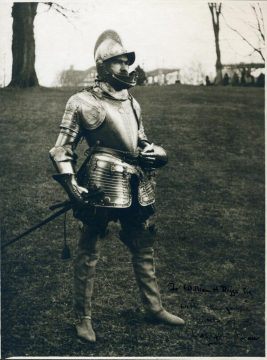
Some of these scientists were world-class eccentrics. Bashford Dean who had the rare distinction of directing both the Metropolitan Museum of Art and the Museum of Natural History in New York City had a passion for both fossils and medieval armor and was known to wear medieval armor on the streets of the city. Calvin Bridges who played a leading role in nailing down the role of genes in chromosomes in Thomas Hunt Morgan’s ‘fly room’ at Columbia University saw his contributions downplayed because of his amorous adventures outside the lab. The tenacious and brilliant Lynn Margulis lived in the shadow of her famous husband Carl Sagan, but scientifically her contributions were much more important than his and she was largely ignored by the scientific community. Shubin does a good job not just showcasing the exciting discoveries but the intrepid discoverers who made them while braving withering criticism and lack of opportunity.
The discovery of DNA and the ability to compare genetic sequences between organisms revolutionized the underpinnings of evolutionary biology. Scientists could now examine gene and protein sequences in different organisms and confirm Darwin’s common ancestry. Two-time Nobel laureate Linus Pauling and Emile Zuckerkandl – a refugee from Nazi Vienna who came to the United States with the support of a letter from Einstein – found out that differences between amino acids in the same protein from different species are more or less constant over evolutionary time, thus presenting a kind of molecular clock that allows us to trace divergences of creatures back in time. This method was immensely valuable for finding out when two species diverged and when their common ancestor might have lived. More generally it gave biologists a potent tool for comparing species that went far beyond surface similarities.
Using this tool, other scientists made the counterintuitive discovery that organisms which appear similar can in fact be very different, and organisms that appear different can in fact be much more similar. I believe that this finding is not just one of the most practically useful discoveries in the recent history of biology but also philosophically one of the most elevating. It tells us that we are much more similar to each other than what appearances would have us believe. Using this set of tools, for instance, Mary Claire-King and Allan Wilson found the famed 98% of similarity between the genome of chimpanzees and humans. And yet the two species are so utterly different. The difference arises not from the genetic sequence but from the location, level and manner in which the genes are expressed. Perhaps the most obvious difference is in the expression of genes in the brain, and experiments with lab-grown human and monkey brains show particular divergences in genes expressed in the cerebral cortex. We also discovered using the same technique that so-called archaebacteria which thrive in extreme environments like salt mines and sulfur springs are genetically much closer to us than they are to other prokaryotic bacteria. Similar comparisons have put a huge dent in the historical definition of race, showing that people with similar skin color can be genetically far more different from each other than they are from people with different skin color. Race is truly more than skin deep, but not at all in the way that early racialists thought it to be. A parallel finding that emerged from comparing differences in genomes was the existence of large regions of genes that do not code for proteins. This junk DNA can be wildly different in otherwise similar species, and while its main function seems to be a critical regulatory one, it hides many more truths that we haven’t uncovered yet.
There are fascinating examples of nature repurposing existing raw material as evolutionary tools, some old and some new. The genes that control limb and bone formation are spread across many families and control, during embryonic development, critical geographical features of limb and bone development such as number, shape and location. When they are interchanged in model organisms like fruit flies and mice, you get grotesque monsters such as flies with legs growing out of their head or mice with ribs instead of vertebra extending all the way from head to tail. These monsters may look morbid, but they showcase beautiful truths about biology. They tell us that there is a precise mapping between specific genes and the form and function of our bodies. The basic pattern of bone development is an example of what is called convergent evolution – a single bone followed by two bones followed by many bones; this pattern is conserved in humans, lizards, bats and panthers. But the way this basic pattern is modified in a human arm and a bat limb and a bird wing to make them uniquely different and suited to their particular environments attests to the wonderful and subtle variation on a common theme that evolution is a master of. That variation can add as well as subtract, as is seen in the degeneration of legs that took place in snakes.
Salamander development especially provides a potent example of what happens when nature expresses or puts the brakes on certain kinds of genes; by fine control of this process, salamanders can change aquatic embryonic features to terrestrial features as they take to land. Shubin fondly talks about the time when, thanks to a cold snap in California, he got access to thousands of dead salamanders from freshwater lakes around Berkeley. What was a tragedy for the salamanders was a gift to science, and Shubin and his Berkeley advisor found that the evolution of limbs in salamanders follows a pattern that is neither completely random nor completely deterministic, and it’s one that is preserved across all salamander species. Their work serves to answer a big question once asked by Stephen Jay Gould: if the tape of life were run again and existential events like the death of the dinosaurs from a meteorite did not occur, would evolution have produced the same life forms? Naive belief would think that the world would have been completely different, given the random nature of mutations. But Shubin and others’ work says that if the tape of life were run again, we would see a certain bias in evolution extending all the way from limbs and bones down to cells and genes, reflecting common environmental constraints and common elegant solutions. God may play at dice, but the dice are loaded.
Perhaps one of the most fascinating discoveries in biology is an extreme kind of repurposing in which almost 10% of the human genome has come from dead viruses; these genes are called retrotransposons. Some of this repurposing is wholly startling and unexpected: for instance, a gene called syncytin that makes a protein that is critical in pregnancy for guarding the frontier between the mother’s body and the baby’s placenta, controlling the flow of both nutrients and waste, is a repurposed form of a primitive HIV-like virus which was using its protein to latch on to cells and get entry to them. This is a fantastic example of similar but not identical functions being repurposed. There is an important gene called Ark in the brain which is responsible for memory creation which also originally comes from a dead virus; understanding the functions of this gene and its original counterpart could lead to insights into diseases of memory impairment like Alzheimer’s disease. That we are in significant part the legacy of the lowliest form of life – one which barely qualifies as life in fact – is as thrilling an evidence of our common descent as any.
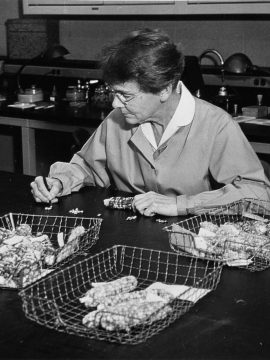
Another dominant paradigm in life’s story has been jumping genes, genes which distribute themselves across the genome because they have acquired a useful function. Jumping genes are a relatively cheap way to create new function, partly through gene duplication. When a gene is duplicated, the extra copy of the gene is much more free to try out mutations of itself and create new functions; a good example of a duplicated gene is the set of genes that codes for hemoglobin and myoglobin. The image that comes to my mind when I think of jumping genes is of a light switch replicating itself and jumping across rooms in a house to control the intensity and timing of the different lights. Jumping genes were originally discovered in corn by Barbara McClintock who got a Nobel Prize for her discovery; like all great scientific discoveries, this one was ignored by the community when it was announced. When Nixon awarded her the National Medal of Science he said, “I have read your work and cannot understand it; that’s why I know it’s useful.” Nixon had a much better grasp of the value of science than many other presidents.
We now know that jumping genes comprise almost 60% of the genome, an observation that makes sense in retrospect – if a gene is discovered once that is useful, why not liberally let it spread its love around so that other cells and organs can benefit from it? But jumping genes don’t always do you good; in the wrong place, a proliferation of them can lead to uncontrolled cell division and diseases like cancer. To prevent this there are constraints in place, regulatory elements that are placed before the sequence of the gene to rein its activity in. The story of jumping genes is thus a story of evolution fashioning both accelerators and brakes, and this delicate balance largely dictates both healthy as well as diseases processes. There is no doubt that as progress in biology goes on, many more fascinating examples of both jumping genes and dead viral genes scattered across our genome will be found, often in unexpected places. My prediction is that they will play a significant part in explaining accelerated human evolution – the process by which we came down from the trees only an eyeblink ago in evolutionary time and made ourselves master of this planet.
Perhaps the ultimate embodiment of repurposing and sculpting life’s building blocks is in the origin of life itself. Life could have well arose in the “warm little pond” described by Darwin in his book, but as recent discoveries have affirmed, it more likely arose in hot vents on the floor of the ocean which provided the chemical energy necessary to jumpstart primitive biochemical cycles of metabolism. This discovery made a huge contribution to a chicken-and-egg problem that bedeviled the field for a long time: What came first, metabolism or replication? While replication was always thought central to life’s evolution, it now seems that metabolism is equally if not more important. Now, metabolism essentially means energy for driving biochemistry. The question then is, where did life’s energy-providing apparatus come from? At the heart of this question lies another big question – the origin of multicellular life. To become reality, multicellular life needs far more energy than single-celled organisms. So how did single-celled bacterial life which can be found in billion-year-old rocks give rise to a spectacular proliferation of multicellular monkeys, sharks, flowers and human beings over the last few hundred million years?
A big key to the puzzle is oxygen. When life began to be able to utilize oxygen, making the transition from anaerobic respiration to aerobic respiration, it exploded. Aerobic respiration provides about twenty times more energy than anaerobic respiration; for life struggling to get a toehold in an inhospitable environment this makes a stupendous difference in the struggle for survival and the preferential propagation of the fittest. The structures inside cells that generate energy are called mitochondria and they are literally the batteries of life. In the 1960s, scientific heretic Lynn Margulis made the startling proposal that mitochondria are much closer evolutionarily to single-celled oxygen-utilizing bacteria than they are to their own cells. She also proposed that chloroplasts which are the workhorses of photosynthesis in plants are much closer to green-blue algae than their own cells. Margulis’s theory was both ridiculed and ignored; her original paper on the topic, now considered one of the seminal papers of 20th century biology, was rejected by fifteen journals before being accepted in 1967 in the Journal of Theoretical Biology; the 56-page article is still eminently readable.
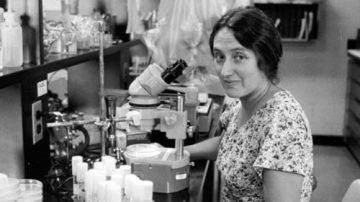
What story did Margulis’s findings tell about the historical origins of mitochondria and chloroplasts? They told a story of hijacking, conflict and eventual peace, much like the story of an unborn baby and its parent. Margulis was essentially arguing that chloroplasts and mitochondria were both parasites that eventually made peace with their host. Sometime billions of years ago, a primitive anaerobic creature that was struggling to survive accidentally swallowed an oxygen-eating bacterium. Somehow the two made peace with other with profitable common cause; the bacterium would provide the creature with a greatly enhanced power source while the creature would nurture the bacterium as if it were its own child and protect it from environmental assaults. Over time the bacterium’s other accessories were lost and only its oxygen-utilizing apparatus remained – we now know this humble organism as the mitochondrion. A similar event happened in the case of chloroplasts and blue-green algae. The general process is called endosymbiosis, the internalizing of one life form by another to become one. It is metaphorically related to another process called horizontal gene transfer. Just like endosymbiosis, horizontal gene transfer can accelerate evolution by transferring genes between bacteria, not through the slower vertical process of Darwinian inheritance but through the rapid process of simple joining up or conjugation. Horizontal gene transfer was pioneered by another heretical scientist named Carl Woese. Like Margulis Woese’s theories were criticized during his lifetime, some ironically by Margulis herself. Today both Margulis and Woese stand vindicated and exemplify the best of the rebellious scientific tradition.
Endosymbiosis set in motion an entire cycle of transitions that made complex life explode. When plants were able to breathe in carbon dioxide and enrich the air with oxygen, they could extensively colonize the surface of the land. When insects found that they could breathe in oxygen and snack on these plants, their own populations rapidly multiplied. Some of those insects became frighteningly large and roamed the planet for millions of years before oxygen was taken up by minerals in rocks and its levels reduced and stabilized, leading to a merciful reduction of size in giant dragonflies and centipedes. The insects and plants set the stage for the next great transition; with enough tasty food resources on land, that first fishlike creature with its lung-like swim bladder could take the first wobbly steps toward colonizing a world of endless opportunities.
Lynn Margulis was nothing if not pugnacious; when she was asked why her ideas were controversial she replied, “I don’t consider my ideas controversial; I consider them right.” Most scientists do not possess the kind of supreme self-confidence Margulis did, but if the history of science teaches us anything it’s that bold scientific ideas almost always win out, even when they are restrained by the currents of history and the vagaries of human bias. The ideas survive, first because they are controversial, then because they are right.
In some sense the history of such ideas is no different from the history of life. Every once in a while evolution throws up an idea that runs counter to the accepted wisdom – a fish with an odd-looking air sac, a reptile with a slightly furry hide, a monkey clumsily trying to crack open a nut with a stone. For the large part these heretical creatures are ignored because they don’t fit the mainstream. Some of them are ostracized and cast out of the tribe. But ultimately they prevail. Not just because they are controversial, but because they point to a more interesting trajectory in life’s progress. Because they are right.
